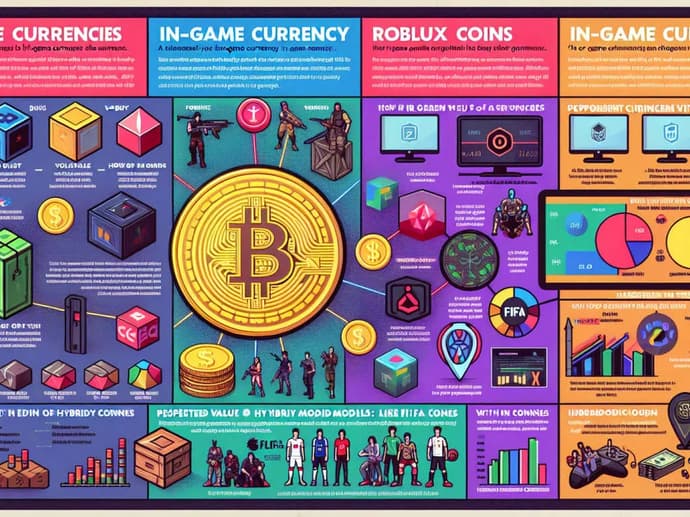
The Psychology Behind In-Game Purchases and Currency

In-game purchases and virtual currency have become integral parts of the modern gaming experience, influencing how players interact with games and how developers design them. These features allow players to enhance their gameplay, unlock exclusive content, and personalize their experiences, all while generating significant revenue for game developers.
Understanding the psychological factors that drive in-game purchases is crucial for both players and developers. These psychological triggers, whether through instant gratification, social influence, or the allure of exclusive content, can significantly impact player behavior and spending patterns. As mentioned by the National Library of Medicine, the reinforcement of these behaviors is linked to how reward systems in games can activate brain regions associated with addiction. This insight underscores the power of these mechanisms in shaping player behavior and highlights the broader implications for the gaming industry, particularly in terms of responsible game design and player protection.
Understanding In-Game Currency
In-game currency is vital in video games, enabling players to buy items, unlock content, and enhance their experience. These virtual currencies are designed to create value and progression, shaping player behavior and spending.
What Is In-Game Currency?
In-game currency, like V-Bucks in Fortnite or Gold in World of Warcraft, is virtual money used to purchase items or unlock features. It includes premium currency bought with real money and earned currency gained through gameplay. Both types coexist, allowing players to either invest time or money to progress.
The Perceived Value of Virtual Currency
Developers enhance the perceived value of in-game currency through scarcity and exclusivity, making it feel essential. For instance, the rarity of V-Bucks increases their value, driving player engagement and spending. This perceived value is further reinforced by how the currency is integrated into the game's economy, influencing players' spending habits.
Examples of Popular In-Game Currencies
In-game currencies are essential in modern gaming, allowing players to purchase items, unlock content, and enhance their experience. These currencies differ across games, each with unique methods of acquisition and use.
Traditional Gaming Currencies
Some of the most popular in-game currencies include:
- V-Bucks in Fortnite: Used to buy cosmetic items, battle passes, and other content. V-Bucks can be purchased with real money or earned through gameplay by completing challenges or leveling up.
- Robux in Roblox: The primary currency in Roblox, used to buy virtual items, accessories, and create or monetize games. Robux can be purchased with real money or earned through various in-game activities.
- FIFA Coins in FIFA Series: Used to buy player packs, upgrade teams, and participate in online matches. Players earn FIFA Coins through gameplay or purchase them for faster progress.
These currencies are deeply integrated into their games, driving player engagement and spending.
Hybrid Models and Sweeps Coins
Hybrid in-game currencies combine virtual gaming with real-world rewards, offering experiences beyond traditional purchases. These currencies often hold real-world value or can be exchanged for tangible benefits, adding deeper engagement to the gaming experience.
- Sweeps Coins in Sweepstakes Casinos: Sweeps coins work like in-game currencies but are used in sweepstakes-style games to win real prizes. Acquired through promotional offers or as bonuses, these coins can be used to play games within the social casino, potentially turning them into real cash rewards. Sweeps coins bridge the gap between virtual gaming and real-world benefits, offering a unique experience. Knowing How to Effectively Compare Social Casinos can help you choose the best platforms to maximize your rewards and enhance your gaming experience.
- Linden Dollars in Second Life: Used to buy, sell, and trade virtual goods. They can be exchanged for real money, blending virtual and real economies.
- Credits in Star Citizen: Purchased with real money to buy in-game assets. Some items have real-world value, blurring the line between virtual and real economies.
These hybrid currencies mix virtual play with real-world rewards, making them an appealing alternative to traditional gaming currencies.
The Psychology of In-Game Purchases
In-game purchases are driven by deep psychological triggers, particularly the desire for achievement and social status, which strongly influence player behavior.
The Satisfaction of Achievement Through Purchases
Players spend in-game currency to unlock achievements, progress faster, or access exclusive content, which provides a sense of accomplishment. Purchasing currency offers immediate gratification, acting as a shortcut to success, while earning it through gameplay delivers a deeper sense of achievement.
The Influence of Social Status and Competition
Social dynamics, like seeing others make purchases or competing on leaderboards, drive players to spend. Social proof and competition push players to buy currency, enhancing their status and recognition within the gaming community.
These psychological factors are key to the success of in-game purchases, tapping into players' desires for achievement and social recognition.
Ethical Considerations in In-Game Purchases
The rise of microtransactions in gaming has sparked ethical concerns, especially regarding their impact on vulnerable players like children and those prone to addiction. These purchases often use psychological triggers such as fear of missing out (FOMO) and instant gratification, leading to excessive and sometimes unintended spending, particularly when costs are obscured by in-game currency.
Loot boxes, which offer random rewards, have fueled debates about whether they should be regulated as gambling. Critics argue they can promote addictive behavior and create an unfair pay-to-win dynamic. According to the Federal Trade Commission, loot boxes pose financial risks, particularly to children, as they may lead to unexpected and significant expenses. While some countries have moved to regulate or ban loot boxes, the gaming industry continues to struggle with balancing monetization and player protection.
Conclusion
In-game currency and purchases are key elements of modern gaming, shaping player behavior and game design. Understanding psychological drivers like instant gratification, social influence, and perceived value is crucial for both players and developers, as these factors heavily influence spending and engagement. Hybrid currencies, blending virtual rewards with real-world benefits, add further complexity. Ethical concerns, particularly the impact of microtransactions on vulnerable players, underscore the need for careful consideration and potential regulation. As the gaming industry evolves, balancing monetization with player protection remains a critical challenge.

Elen Stelmakh est une personne créative qui se consacre à l'avancement de la culture des jeux vidéo par le biais d'articles et de conceptions visuelles. En tant qu'auteur d'EGamersWorld et concepteur d'un site Web de jeux à temps plein, Elen ne se contente pas de créer du contenu, elle y insuffle également de l'énergie et de la créativité.
 Tous les boss du chapitre 7 de Fortnite - leurs emplacements et leurs récompensesChapitre 7 de Fortnite Tous les boss avec les emplacements exacts et les récompenses.
Tous les boss du chapitre 7 de Fortnite - leurs emplacements et leurs récompensesChapitre 7 de Fortnite Tous les boss avec les emplacements exacts et les récompenses. Aperçu des éliminatoires du StarLadder Budapest Major 2025Des premières surprises aux coups d'éclat, la route vers les playoffs du StarLadder Budapest Major 2025 a été inoubliable. Récapitulatif rapide des résultats clés qui ont défini les huit premiers.
Aperçu des éliminatoires du StarLadder Budapest Major 2025Des premières surprises aux coups d'éclat, la route vers les playoffs du StarLadder Budapest Major 2025 a été inoubliable. Récapitulatif rapide des résultats clés qui ont défini les huit premiers. Détails de l'événement Steal a Brainrot Winter HourDécouvrez tout sur Roblox Steal a Brainrot Winter Hour Event - New Christams Brainrots and Rewards.
Détails de l'événement Steal a Brainrot Winter HourDécouvrez tout sur Roblox Steal a Brainrot Winter Hour Event - New Christams Brainrots and Rewards. Voici le chapitre 7 de Fortnite : tous les personnages et leur emplacementFortnite Chapitre 7 Tous les personnages sont répartis sur la carte de la Côte d'Or, offrant des services, des options d'embauche et des points de progression de quête qui influencent chaque match de la saison d'ouverture.
Voici le chapitre 7 de Fortnite : tous les personnages et leur emplacementFortnite Chapitre 7 Tous les personnages sont répartis sur la carte de la Côte d'Or, offrant des services, des options d'embauche et des points de progression de quête qui influencent chaque match de la saison d'ouverture.


